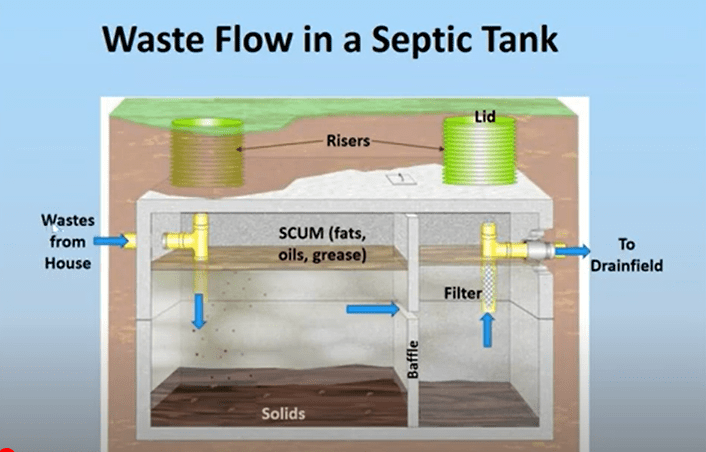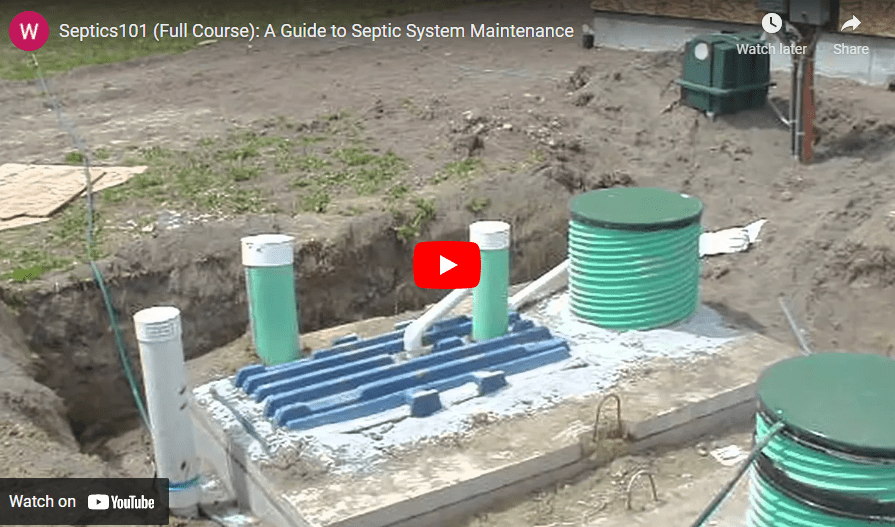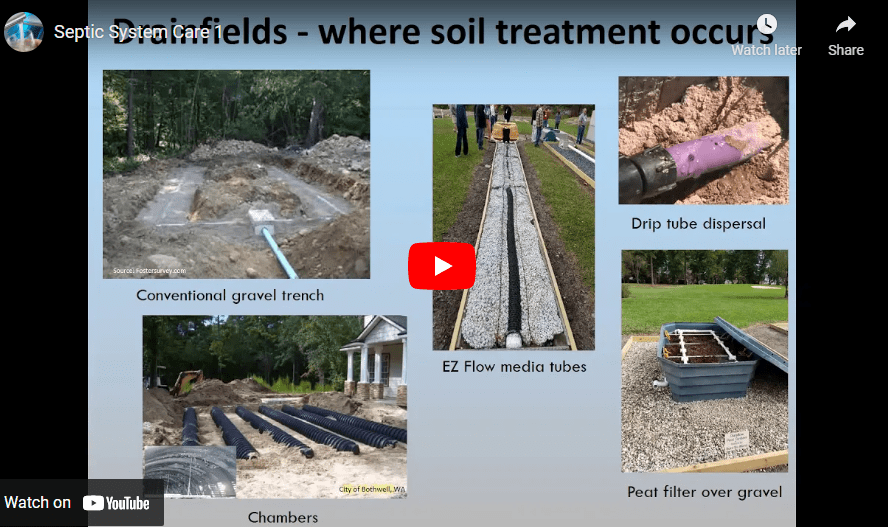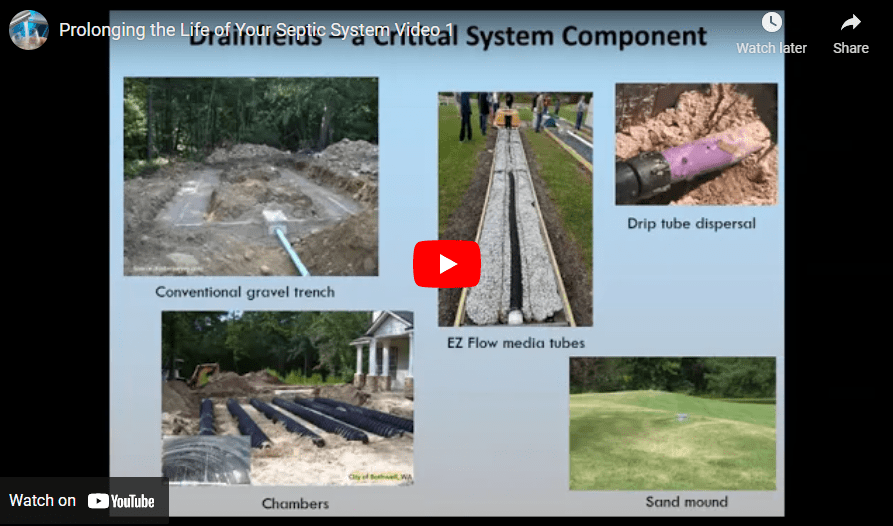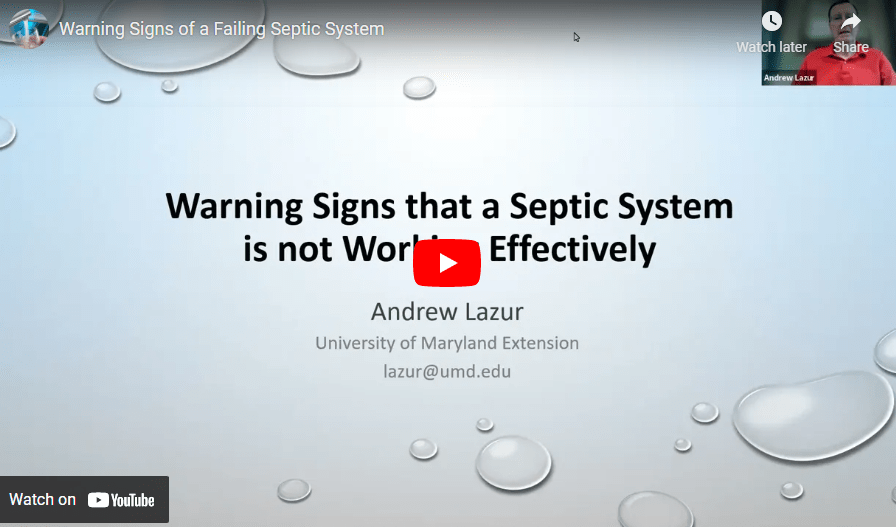Maintaining Your Septic System
Maintaining your septic system is relatively easy.
Here are some simple steps you can take to make sure that your system is in good shape and able to operate efficiently.
PUMP YOUR TANK
We recommend testing your conventional tank every 3-5 years, depending on the number of occupants in your house and the size of your septic tank. Some houses may require more frequent pumping, on the order of every 1-2 years.
If the septic tank has not been pumped out in five or more years, sludge may have built up so much that waste water is released without sufficient time in the tank for treatment and settling of particles. This may pollute the groundwater or clog the drainfield.
If you have a Best Available Technology (BAT) unit, then refer to your service provider as to the frequency of pumping.
ADD AN OUTLET FILTER TO THE SEPTIC TANK
Filters, placed in the outlet baffle, are an easy and affordable way to ensure that scum and sludge do not reach your absorption area. A septic professional can clean the filter annually.
ADD A RISER TO YOUR BURIED MANHOLE
Septic professionals will need to pump your tank through the manhole. But if the manhole is buried it will take them time to locate and uncover your manhole. By adding a riser, the manhole can be accessed from the ground surface, which will make it easier for the professional and will be less expensive for you.
DON’T FLOOD YOUR SYSTEM
Septic tanks require a certain amount of time to allow for scum and sludge to settle. If your push too much water through your tank too quickly, the tank will not have enough time to do its job. Space out your showers, laundry, and dishwashing so that your tank does not get flooded with water. Repair any leaking faucet or toilet.
BE CAUTIOUS ABOUT WHAT YOU FLUSH DOWN YOUR DRAINS AND TOILETS
Try to limit what you flush down your toilet to water, human waste, and toilet paper. If you have a garbage disposal, use it sparingly. Do not flush grease, feminine products, cigarettes, baby wipes, chemicals, or expired/unused medicine through your system. Products may state they are flushable or biodegradable, but that does not apply to a septic system. You can also save money by avoiding septic system additives, which are not necessary for your system’s operation and performance. Regular flushing provides all the beneficial bacteria your system needs to operate properly.
INSPECT YOUR SYSTEM FOR SIGNS OF TROUBLE
Walk around your property and look for:
Wet areas or standing water above the drainfield
- Sludge particles may have clogged the drainfield, and tree roots or broken pipes keep the waste water from dispersing through the entire drainfield.
- Water use in the house may have exceeded the design capacity of the system. In this case waste water does not move through the soil as it should, and instead rises to the surface creating a serious health risk and odor problems.
Toilets running slowly or are backing up
- In the worst cases, the basement can flood with sewage. This can be the result of clogged sewer lines to the tank, a plugged inlet or outlet pipe, a full septic tank, or a failed drainfield.
Sewage odors occur in the house, above the tank and drainfield, or escape from the vent pipe
- There should be no odors if the system is operating properly. If there are odors, it may be an early warning sign that the system is failing.
Helpful Resources
- A Guide to Septic Systems and Maintenance - FS 1105
- Guía Sobre Sistemas Sépticos y su Mantenimiento - FS 1105
- Septic Systems and Best Available Technologies - FS 1110
- Septic Systems and Their Maintenance - Soil Facts
- Septic Records and Maintenance Guidelines
- Manual For Septic System Professionals
- Household Chemicals and Your Septic System
- Onsite Sewage Treatment and Disposal Systems: Viruses
- Onsite Sewage Treatment and Disposal Systems: Bacteria and Protozoa
- Septic System Additives

